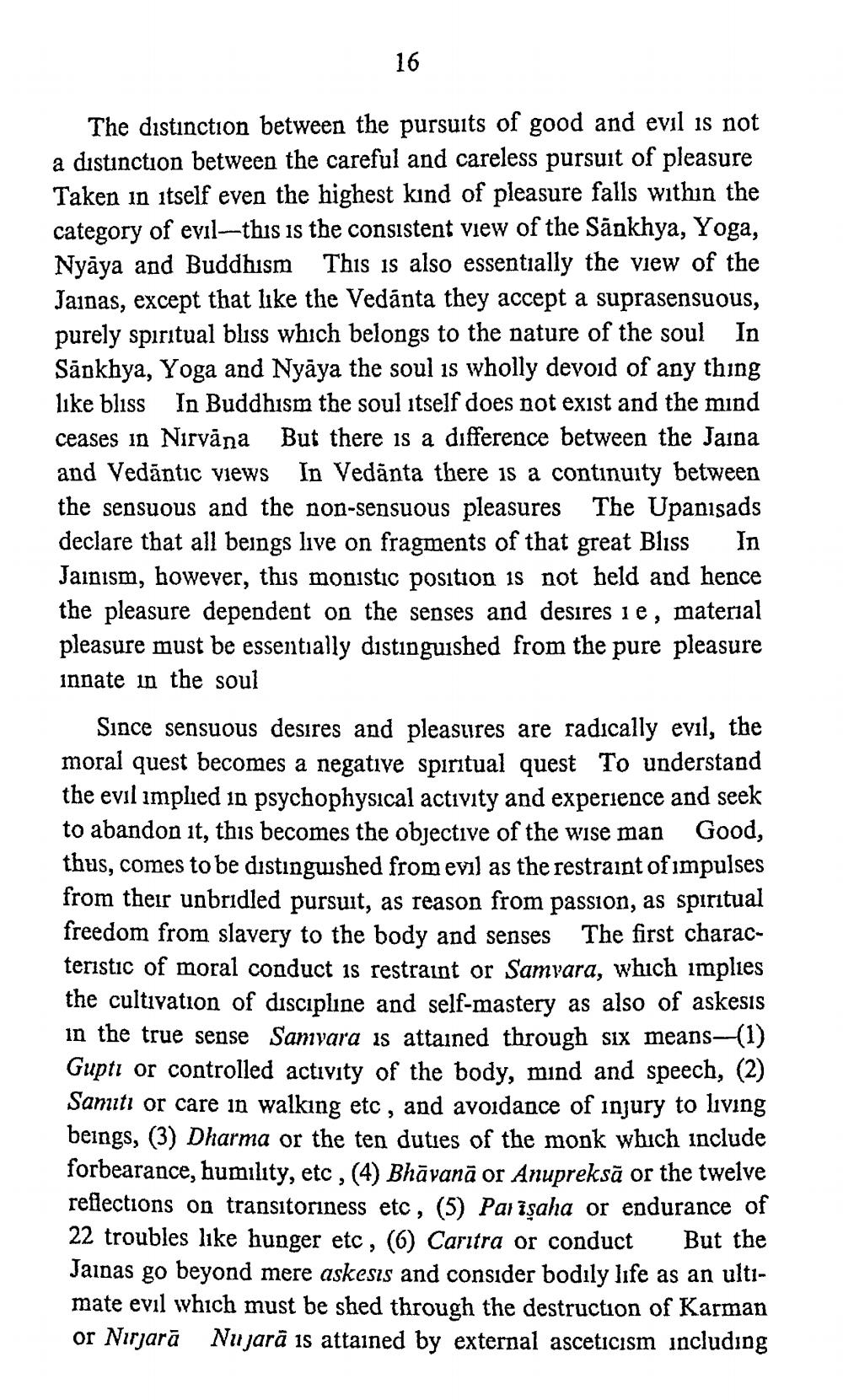________________
16
The distinction between the pursuits of good and evil is not a distinction between the careful and careless pursuit of pleasure Taken in itself even the highest kind of pleasure falls within the category of evil this is the consistent view of the Sankhya, Yoga, Nyāya and Buddhism This is also essentially the view of the Jainas, except that like the Vedanta they accept a suprasensuous, purely spiritual bliss which belongs to the nature of the soul In Sankhya, Yoga and Nyāya the soul is wholly devoid of any thing like bliss In Buddhism the soul itself does not exist and the mind ceases in Nirvana But there is a difference between the Jaina and Vedāntic views In Vedānta there is a continuity between the sensuous and the non-sensuous pleasures The Upanisads declare that all beings live on fragments of that great Bliss In Jainism, however, this monistic position is not held and hence the pleasure dependent on the senses and desires i e, material pleasure must be essentially distinguished from the pure pleasure innate in the soul
Since sensuous desires and pleasures are radically evil, the moral quest becomes a negative spiritual quest To understand the evil implied in psychophysical activity and experience and seek to abandon it, this becomes the objective of the wise man Good, thus, comes to be distinguished from evil as the restraint of impulses from their unbridled pursuit, as reason from passion, as spiritual freedom from slavery to the body and senses The first characteristic of moral conduct is restraint or Samvara, which implies the cultivation of discipline and self-mastery as also of askesis in the true sense Sanivara is attained through six means-(1) Guptı or controlled activity of the body, mind and speech, (2) Samuti or care in walking etc, and avoidance of injury to living beings, (3) Dharma or the ten duties of the monk which include forbearance, humility, etc. (4) Bhāvanā or Anupreksā or the twelve reflections on transitoriness etc, (5) Par īşaha or endurance of 22 troubles like hunger etc, 6 Caritra or conduct But the Jainas go beyond mere askesis and consider bodily life as an ultimate evil which must be shed through the destruction of Karman or Nurjarā Nujarā is attained by external asceticism including




